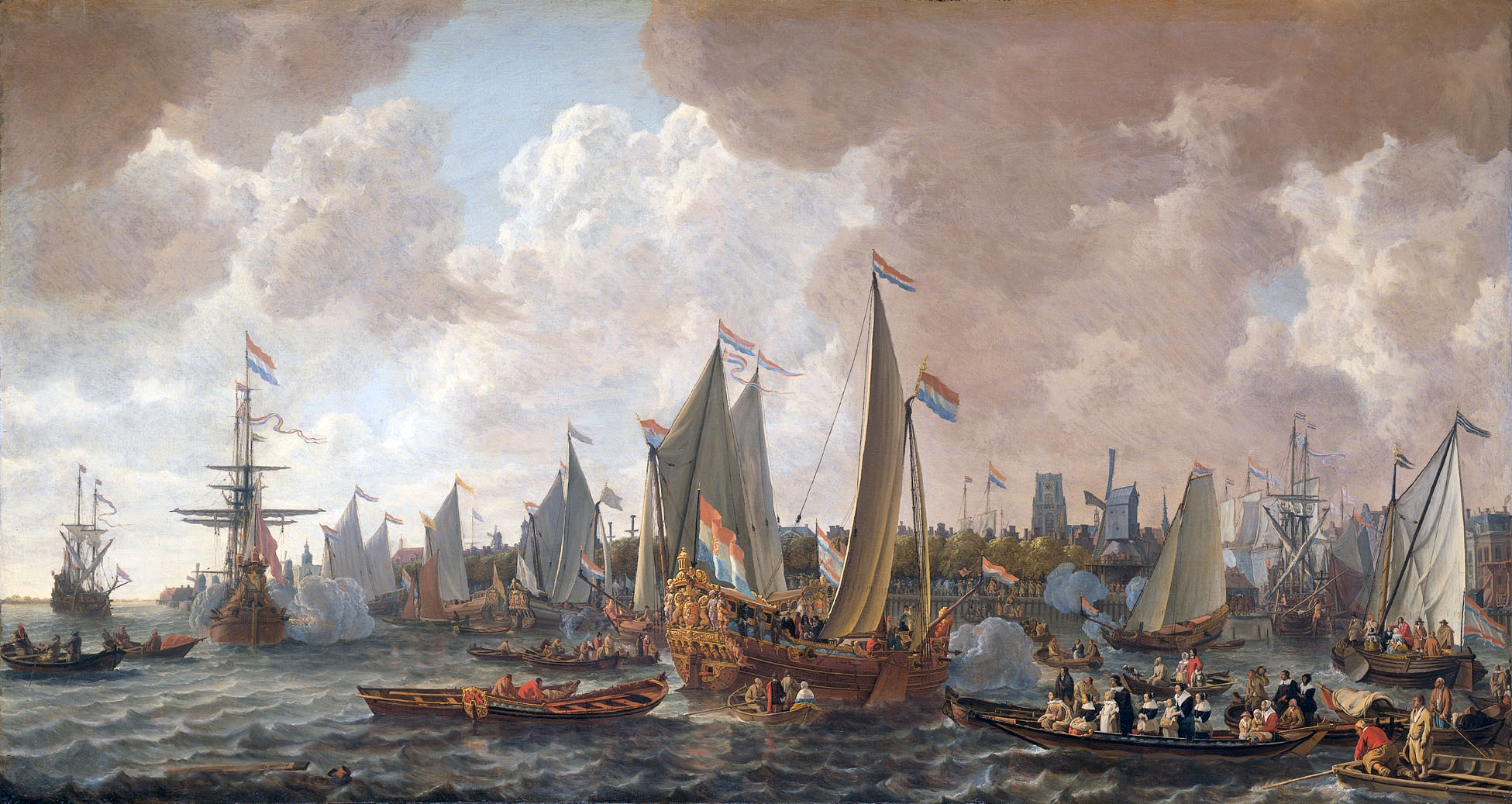
For reservations to experience “nkwiluntàmën: I long for it; I am lonesome for it (such as the sound of a drum)” by Indigenous artist Nathan Young, please go to https://nkwiluntamen.com/
A Diplomatic Brou-ha-ha!
- April 27, 2011
- Posted By: Pennsbury Manor
Welcome to William’s World!
We often spend so much time focusing on William Penn’s own life that we forget there was an entire WORLD of dramatic events and intrigues happening all around him!! William’s World, our new monthly featurette, will focus on the people, places, inventions, and ideas of the Early Modern Period.
Scene: London, England
Date: 30 September 1661
Where’s William? An almost 17 year old William Penn is studying at Christ Church College, Oxford, roughly 50 miles up the Thames River from London.
Background: The Restoration of Charles II in 1660 has brought changes to the population of London. The returning Royalists supplant the Cromwellian Puritans, the Church of England’s Anglicism is restored over the Protectorate’s Presbyterianism, and continental European rulers are establishing embassies in the English Capitol. An arriving ambassador is received with great pomp and ceremony, not only by Charles II, but also by fellow ambassadors already in London. Such is the case when Sweden’s Ambassador Brahe arrives by barge at the Tower of London. They planned for Brahe to enter an official state carriage and proceed to the palace at Whitehall for a formal presentation to the king. Other ambassadors follow behind in their own elaborate carriages, following an order of precedence determined by the nominal founding of the various royal houses in Europe.
The Main Event: Now it just so happens that both France and Spain are claiming to have the highest rank among European states, and both are planning to be in the Swedish ambassadors’ procession, and their embassies are across the street from each other. Charles has asked them both not to participate, and in learning of their decisions, instructs that no Englishman is to participate or meddle in the dispute. English soldiers are called in under arms, and London’s Trained Bands (an efficient group of militia) were also on duty as well.
By the early afternoon, both the French and Spanish had arranged their carriages and retinues for the procession. The French contingent numbered some 150, the Spanish around 40 or so. An eyewitness to the proceedings, Samuel Pepys observed, “…great preparations on both sides; but the French made the most noise and vaunted most, the other made no stir almost at all…”, then, in spite of all this activity, goes off to lunch.
While he dined, the two groups began to make their way toward the Tower, as their embassies are some distance away. At some point in the journey, most likely after arriving at the landing, the French and Spanish began a running battle along London’s crowded streets. They head North-East, over Tower Hill, toward Crutched Friars near Aldgate. There, the Spanish stalled the French by killing and cutting the harnesses of a number of horses pulling the French coach, leaving it unable to move. In the process, at least 6 Frenchmen were killed and 33 wounded. The Spanish attempted to avoid similar destruction by assigning individual guards for each Spanish horse and coachman and reinforcing their horses’ harnesses with chains. However, one or two men of their party were still killed, and several more wounded. Additionally, one English soldier somewhere along the route was killed, most likely by a French firearm, as the Spanish were reported to be armed only with swords.
Our eyewitness describes the success of the Spanish, as their coach “…is gone through the City next to our King’s coach. At which it is strange to see how the City did rejoice. And endeed, we do naturally all love the Spanish and hate the French.” He also witnesses the ending, as he recalls:
…I run after them with my boy after me, through all the dirt and the streets full of people; till at last at the mewes [Royal Mews at Charing Cross, some miles away from the scene of battle] I saw the Spanish coach go, with 50 drawne swords at least to guard it and our soldiers shouting for joy. And so I fallowed the coach, and then met it at Yorke-house, where the Embassador lies; and there it went with great state.
A victory, it would seem, for the Spanish, and the London population which seemed to prefer them over the French.
The Outcome: It seems likely that news of such an event would have spread quickly around the London area, given the number of casualties (likely over 50) and the success of the English favorites. It is probable that William Penn would have heard the tale, given that his father was close friends and neighbors with our eyewitness, Samuel Pepys, whom he also worked with at the Navy Office. Indeed, a few days later Pepys and Sir William Penn met a Monsieur Eschar, who complained that the English actually assisted the Spanish, and that the French Ambassador would leave England unless King Charles acted against the Spanish and the participating English. Pepys observed the threat and, on the Ambassador leaving, noted that, “… I and all that I meet with, all are very glad of.”
The French Ambassador did leave England in October, but returned in January, despite Charles ignoring his threats. The Spanish court did eventually recall their Ambassador, issued an apology, and agreed to allow the French precedence, although a binding agreement on this topic was not reached until 1761, a century after the event. Charles wised up much faster, issuing orders that only English subjects were to be permitted at these types of state events.
Written by Todd Galle, Museum Curator

